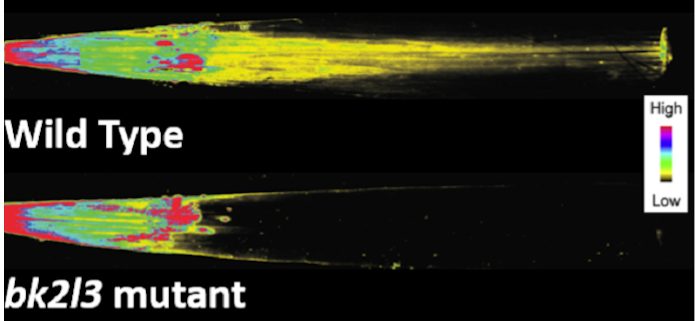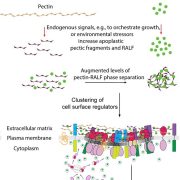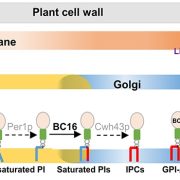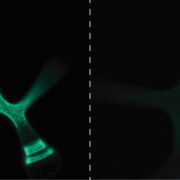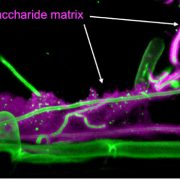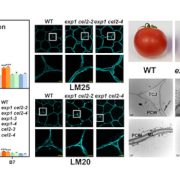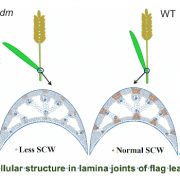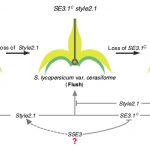Under Pressure: The cell wall of sieve elements is critical for sugar transport
Tyler J. McCubbin1,4, Benjamin T. Julius1, and David M. Braun1
1Divisions of Plant and Biological Sciences, Interdisciplinary Plant Group, and the Missouri Maize Center, University of Missouri, Columbia, MO 65211 USA
4Bayer Crop Science, Chesterfield, MO 63017 USA
Background: In order to grow and develop, plants must transport sugars from photosynthetic leaves to non-photosynthetic parts of the plant, such as roots, flowers, and seeds. The transport of sugars occurs within cells called sieve elements. Sugar transport generates high pressure within the sieve elements, which moves the sugars from leaves to non-photosynthetic tissues.
Question: We identified a mutant in maize (corn) with reduced export of sugars from leaves to other tissues. Surprisingly, the gene responsible is known to be involved in building cell walls and was not expected to play a role in sugar transport. We sought to understand the link between cell wall synthesis and sugar transport.
Findings: We found that the cell wall of sieve elements is important to maintain the export of sugars from leaves. We identified plants with defective copies of the Brittle Stalk2-Like3 (Bk2L3) gene, which is required to properly incorporate cellulose, the most abundant structural component in cell walls, into the growing walls. bk2l3 mutant plants exported sugars at a slower rate than the normal, non-mutated (called “wild type”) plants, leading to a buildup of sugars and starch in the leaves. Sieve elements of bk2l3 mutants contained less cellulose than the wild type plants, and sieve element cell walls appeared improperly formed when observed by microscopy. The sieve elements of bk2l3 mutants exhibited reduced pressure in photosynthetic leaves as compared to wild type, suggesting that the misformed cell wall limits the ability to sustain the high internal pressure that occurs during sugar transport. Therefore, our results indicate that the physical strength and integrity of the sieve element cell wall is essential to maintain the high pressure that drives the long-distance export of sugars from leaves to other tissues.
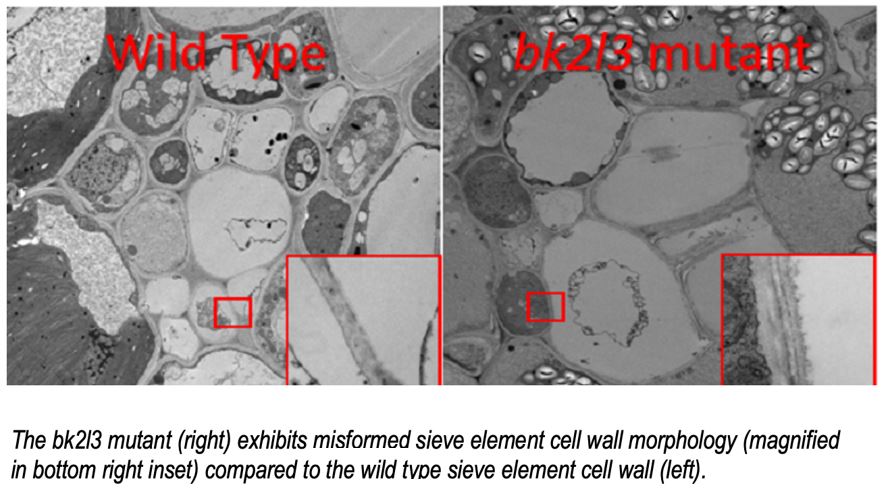 Next steps: To better understand how the structure of the sieve element cell wall contributes to its function during sugar transport, scientists will need to directly measure the biophysical properties of these cell walls and determine how the molecular building blocks, including cellulose and other compounds, enable these properties.
Next steps: To better understand how the structure of the sieve element cell wall contributes to its function during sugar transport, scientists will need to directly measure the biophysical properties of these cell walls and determine how the molecular building blocks, including cellulose and other compounds, enable these properties.
Julius, BT, McCubbin TJ, Mertz, RA, Nick Baert, Jan Knoblauch, DeAna G. Grant, Kyle Conner, Saadia Bihmidine, Paul Chomet, Ruth Wagner, Jeff Woessner, Karen Grote, Jeanette Peevers, Thomas L. Slewinski, Maureen C. McCann, Nicholas C. Carpita, Michael Knoblauch, David M. Braun. (2021). Maize Brittle Stalk2-Like3, encoding a COBRA protein, functions in cell wall formation and carbohydrate partitioning. https://doi.org/10.1093/plcell/koab193


